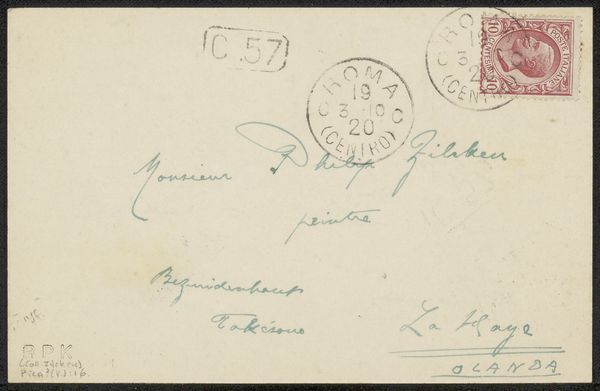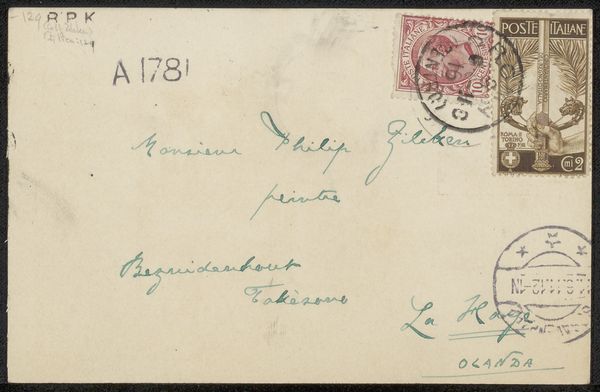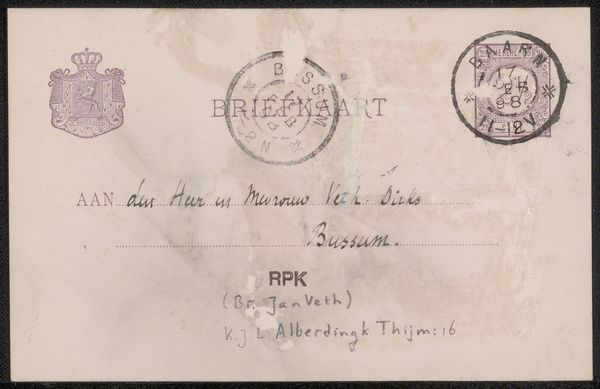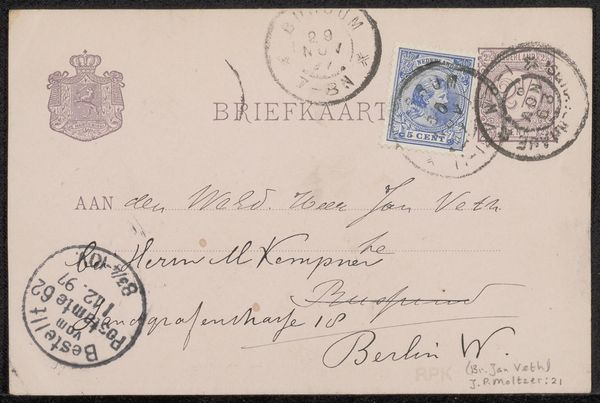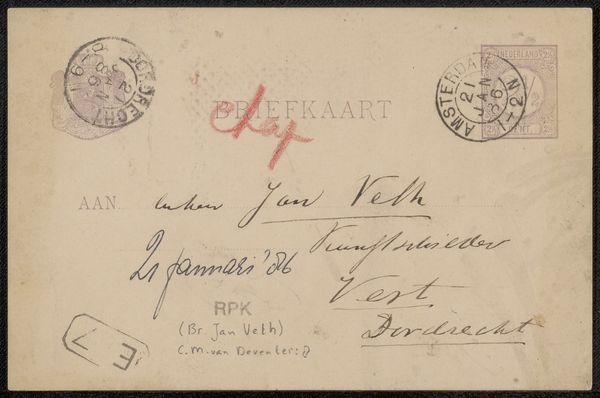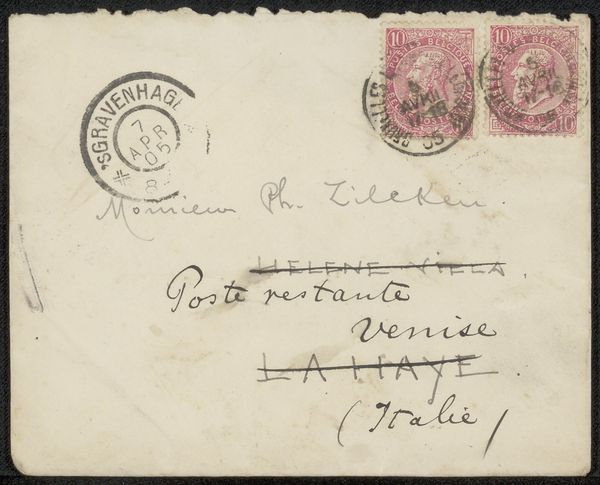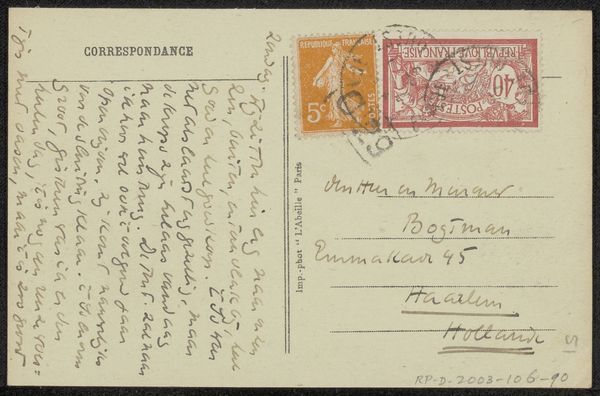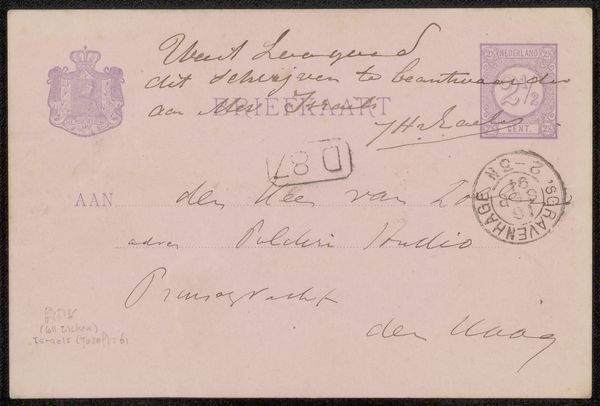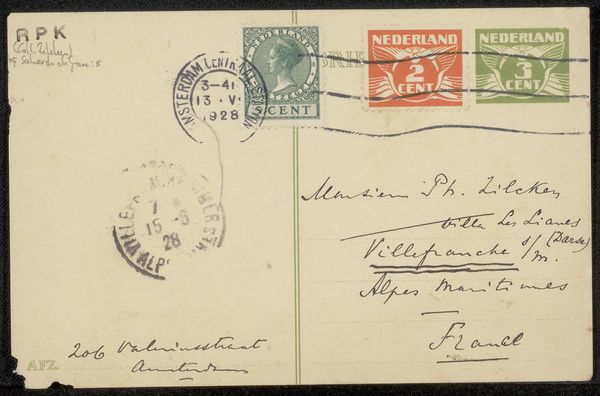
paper, ink, pen
#
pen sketch
#
hand drawn type
#
paper
#
ink
#
pen work
#
symbolism
#
pen
#
post-impressionism
Copyright: Rijks Museum: Open Domain
Editor: Here we have "Prentbriefkaart aan Willem Vogelsang," or "Picture Postcard to Willem Vogelsang" by Jan Toorop, possibly from 1904. It's pen and ink on paper, so relatively simple materials. What immediately strikes me is how utilitarian it seems, like a simple message dashed off. How should we approach reading this from a materialist perspective? Curator: Precisely! The very means of production and circulation are central here. Consider the industrial context: cheap paper, mass-produced ink. The postal system itself is a technology that facilitates the rapid exchange of information. Look closely at the stamps and postal markings. They tell us about networks of distribution and communication – how goods and ideas moved. This isn't just a piece of art, but evidence of material and social processes at work. Does that postal route reflect power structures and flows of capital at the time, would you say? Editor: I see what you mean. It makes me think about how different this is from commissioning a portrait or other art objects, since these methods are often accessible only to wealthy people. But everyone can buy a postcard. Curator: Exactly. We need to consider the consumption of art. A postcard implies a mass audience and a democratization of imagery, even though its content, the handwritten message and address, retains a personal and class dimension. The accessibility of the medium allows for a different type of artistic engagement, perhaps one more intertwined with everyday life. Consider how Toorop utilizes “low” materials to communicate through and engage with systems, like the post office, typically outside “art”. Editor: That gives me a totally different view of the artwork. I guess focusing on material circumstances really opens up interesting avenues of interpretation. Curator: Indeed. Examining the materials and modes of production reveals how art is embedded in a complex web of social, economic, and technological forces. That helps us break down the conventional divide between art and everyday life.
Comments
No comments
Be the first to comment and join the conversation on the ultimate creative platform.
